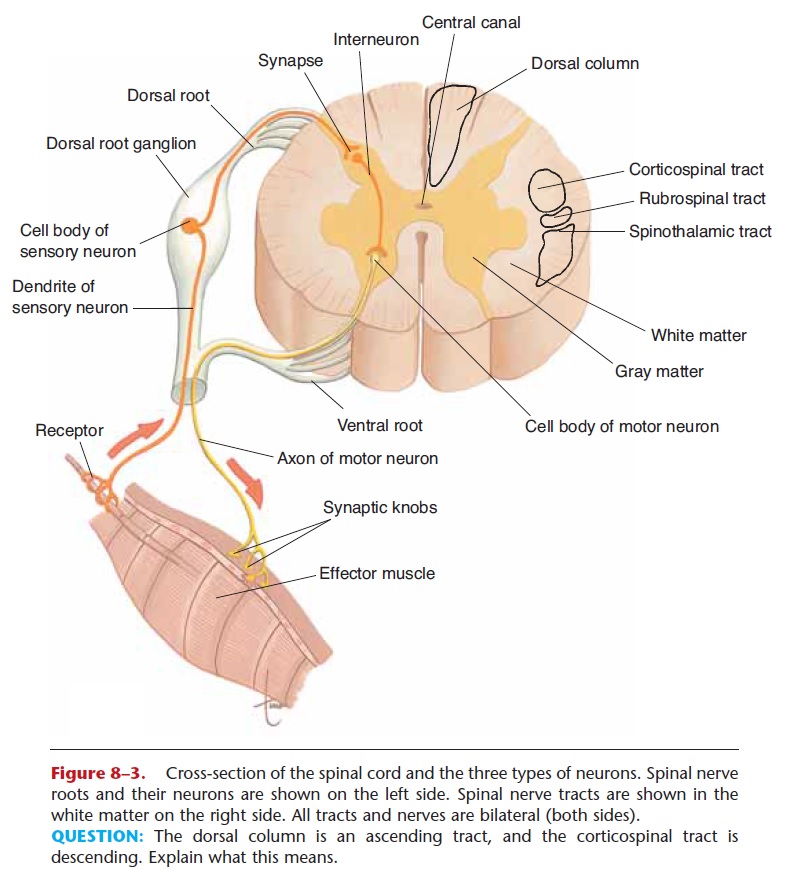Chapter: Essentials of Anatomy and Physiology: The Nervous System
Types of Neurons
TYPES OF NEURONS
Neurons may be classified into three groups: sensory neurons, motor neurons, and interneurons (Fig. 8–3).
Sensory neurons (or afferent neurons) carry im-pulses from receptors to the central nervous system. Receptors detect external or internal changes and send the information to the CNS in the form of impulses by way of the afferent neurons. The central nervous system interprets these impulses as a sense tion. Sensory neurons from receptors in skin, skeletal muscles, and joints are calledsomatic; those from receptors in internal organs are called visceral sensory neurons.
Motor neurons (or efferent neurons) carry impulses from the central nervous system to effectors. The two types of effectors are muscles and glands. In response to impulses, muscles contract or relax and glands secrete. Motor neurons linked to skeletal mus-cle are called somatic; those to smooth muscle, cardiac muscle, and glands are called visceral.

Figure 8–3. Cross-section of the spinal cord and the three types of neurons. Spinal nerve roots and their neurons are shown on the left side. Spinal nerve tracts are shown in the white matter on the right side. All tracts and nerves are bilateral (both sides).
QUESTION: The dorsal column is an ascending tract, and the corticospinal tract is descending. Explain what this means.
Sensory and motor neurons make up the peripheral nervous system. Visceral motor neurons form the autonomic nervous system, a specialized subdivision of the PNS that will be discussed later.
Interneurons are found entirely within the central nervous system. They are arranged so as to carry only sensory or motor impulses, or to integrate these func-tions. Some interneurons in the brain are concerned with thinking, learning, and memory.
A neuron carries impulses in only one direction. This is the result of the neuron’s structure and loca-tion, as well as its physical arrangement with other neurons and the resulting pattern of synapses. The functioning nervous system, therefore, is an enormous network of “one-way streets,” and there is no danger of impulses running into and canceling one another out.
Related Topics